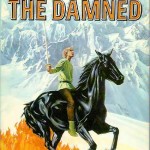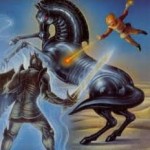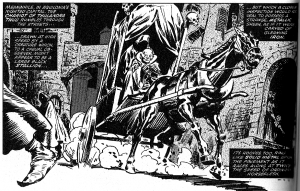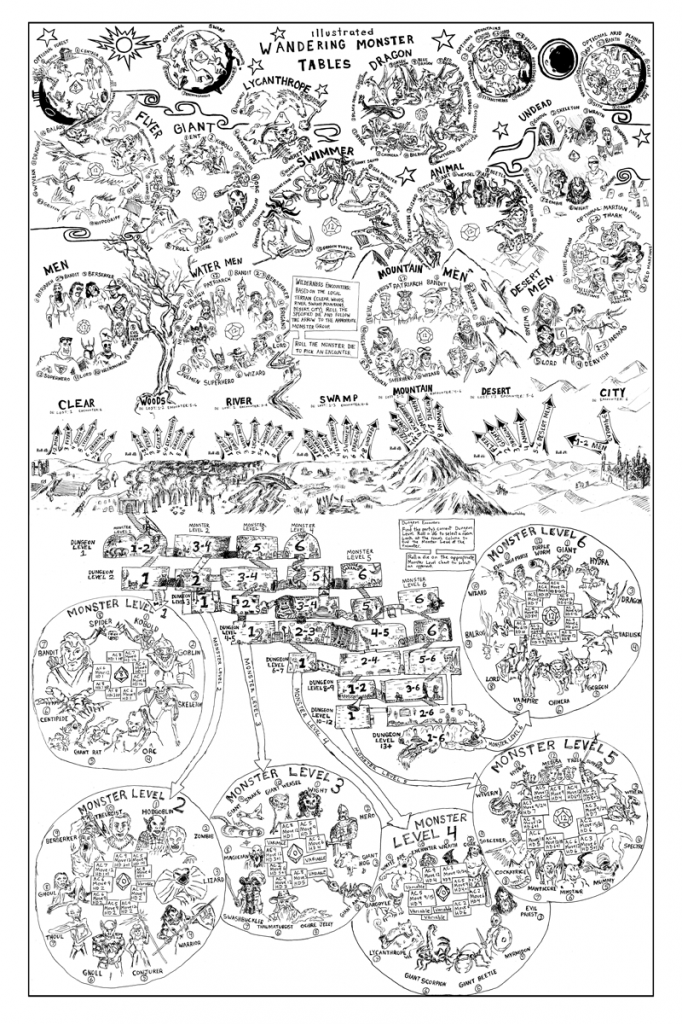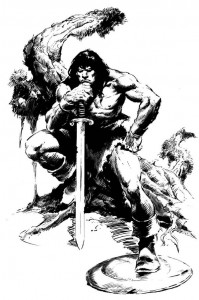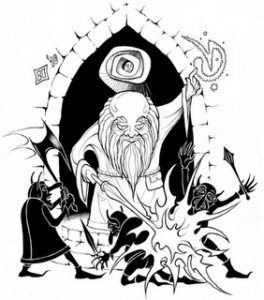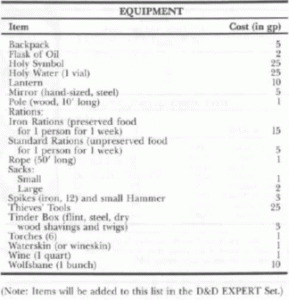Yesterday, Tavis enticed my gaming group to the Soho Gallery for Digital Art for a D&D art/gaming event. The bait on the hook included Doritos, new art by Erol Otus and other cool people, and a game DMed by Mike Mornard. Mike played in Gary Gygax’s DND game in 1971 AND in Dave Arneson’s game and Phil Barker’s game. The guy had a talent for finding cool gaming groups.
Since I’ve appointed myself a minor curate in the Church of Preserving Cool D&D History, I couldn’t resist the opportunity to pepper Mike with questions. I also got to play a session in his game, and made a real hash of being the party mapper. (What else would you expected from a 4e player?)
Mike showed off some of his autographed books: his 1e Player’s Handbook was signed to “Lessnard the Wizard”, one of Mike’s characters. Apparently, when he was level 1, Lessnard had the distinction of surviving a solo trip to level 3 of the Greyhawk dungeon. Lessnard was alone because he couldn’t convince any hirelings to join him – he had lost too many hirelings in the dungeon already. Mike produced that story to demonstrate that, contrary to common belief, a lowly level 1 wizard had plenty of survivability!
It sounds like Lessnard adventured over several solo adventures with Gygax, which seems to have been pretty common in the old days. I’d heard that low-level characters often travelled in groups while high-level characters adventured solo, with just their henchmen to back them up, but from the Lessnard story, it appears that even ill-advised level-one characters sometimes attempted the feat. On the other hand, Lessnard’s survival was notable enough to be memorable for 40 years, so maybe it wasn’t a common practice.
Mike gave a fascinating account of a typical early D&D game, with a peculiar detail that I’d never heard before. Gary never used maps or minis: maps and minis were Dave Arneson’s thing. Gary ran games in his office, which was provided with chairs, a couch, and file cabinets. While playing, Gary would open the drawers of the file cabinet and sit behind them so that the players COULD NOT SEE HIM. They only experienced the Dungeon Master as a disembodied voice.
During games, cross-talk was discouraged: the party caller did most of the talking, and other players only talked if they had something to contribute. If the players chattered too much, they’d miss what the Disembodied Voice was saying, and that would be, as Mike put it, “suicide”. “You could feel the tension in the room,” he added.
It’s a very different style than the way I and my friends play. We do a lot of joking and chattering, the DM doesn’t kill you for not paying attention, and apart from a few suspenseful moments, tension at the table is often low. I honestly don’t think one way to play is necessarily worse than the other, any more than comedies are worse than suspense movies or vice versa. I’d be happy to play in either style of game – preferably both.
Mike said a lot more. I’ll try to write up the rest of my notes – including answers to questions about mapping, classes, weapons, and roleplaying in the early days – in the next post.

